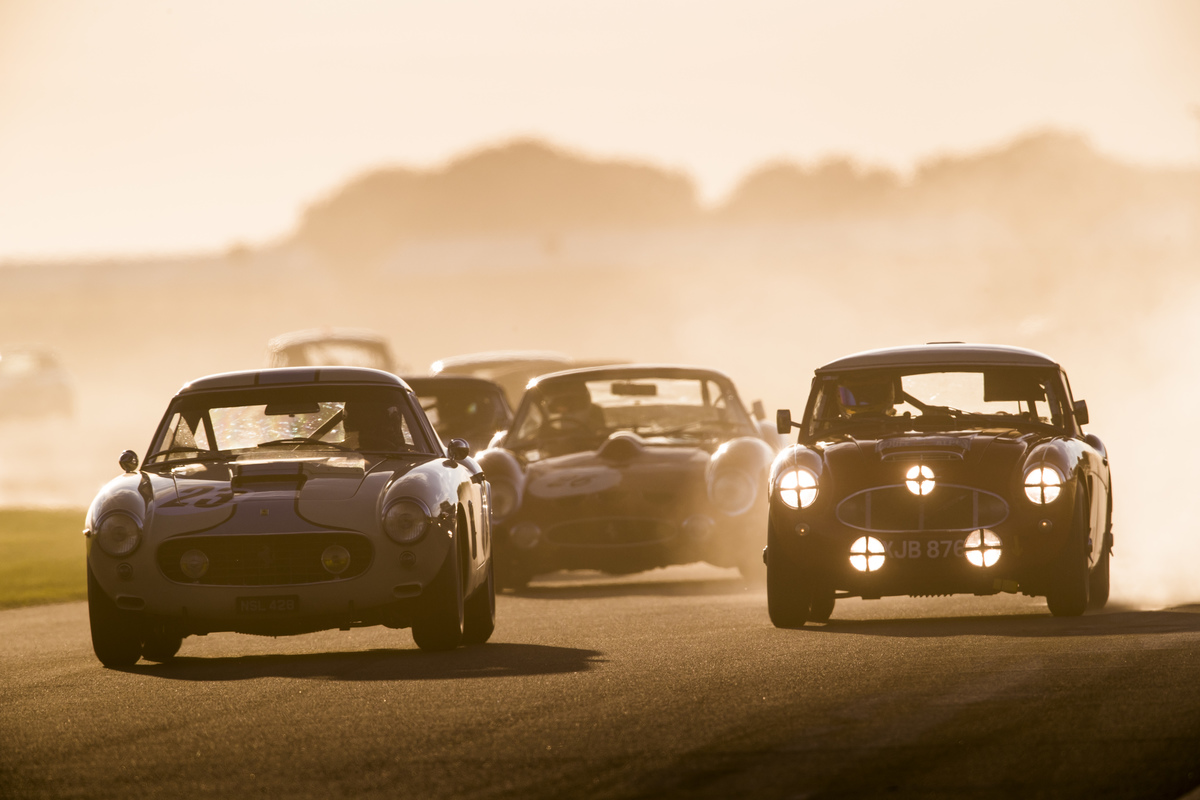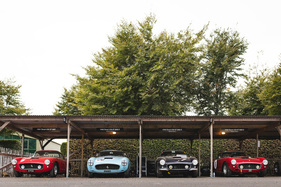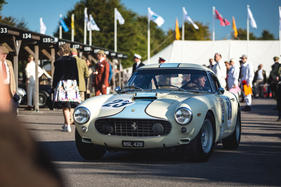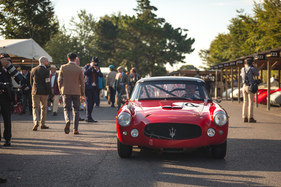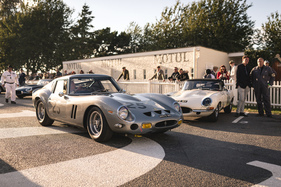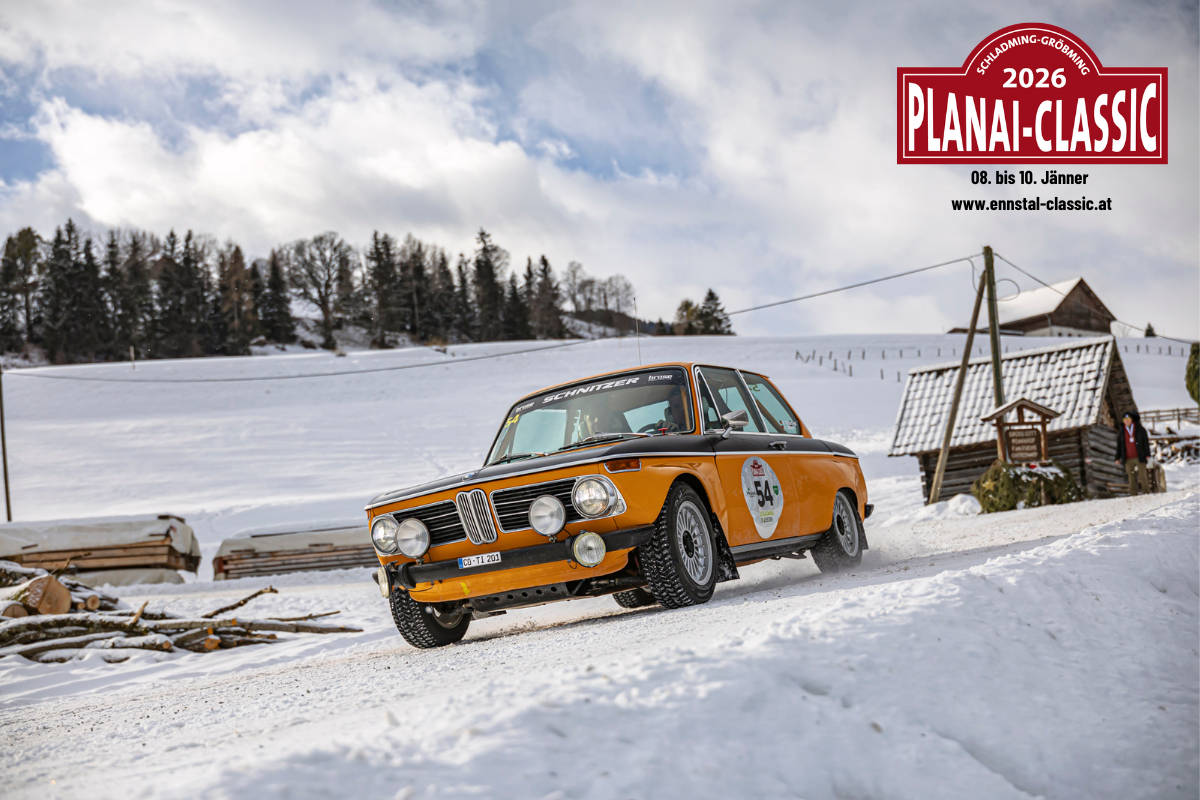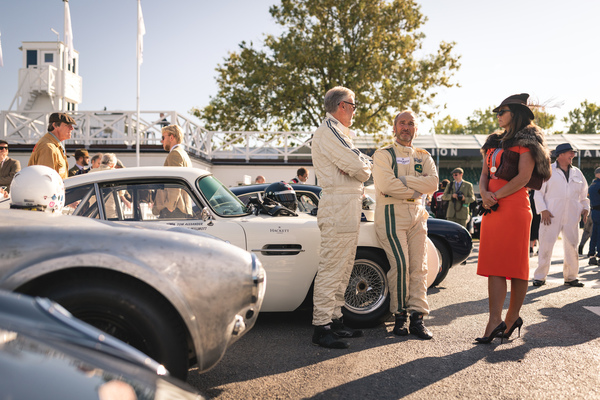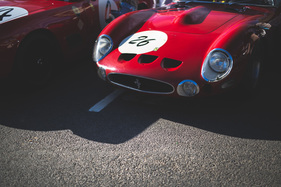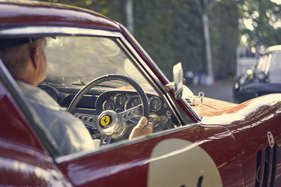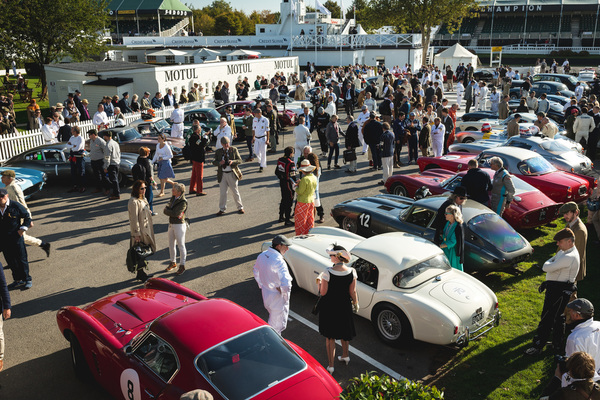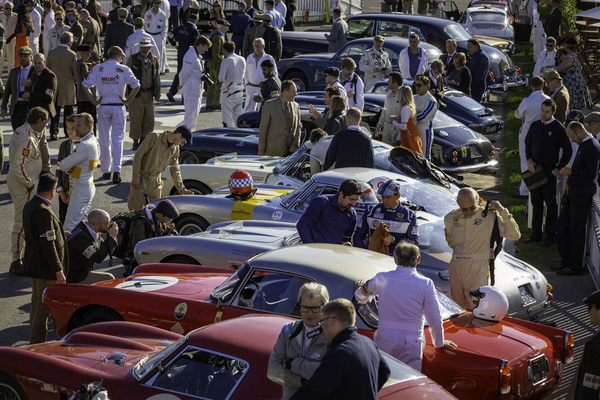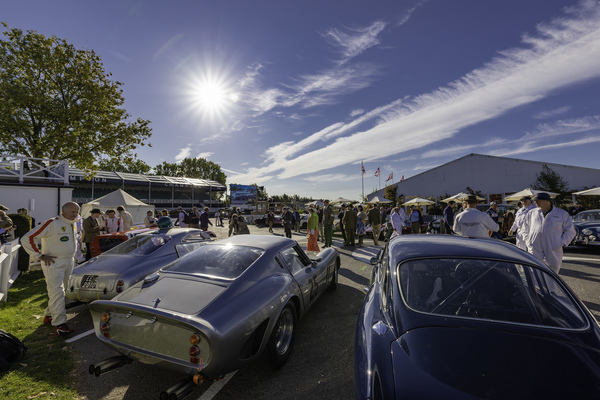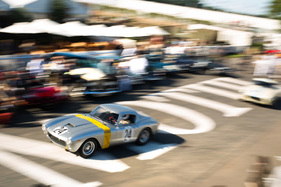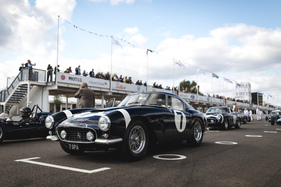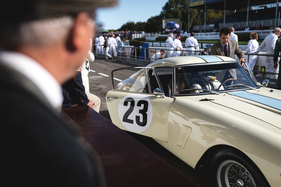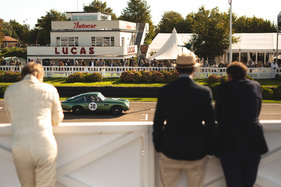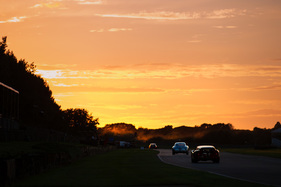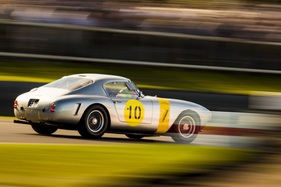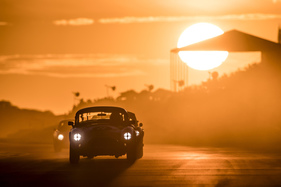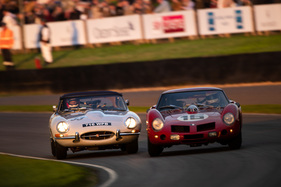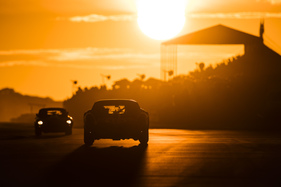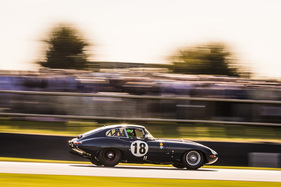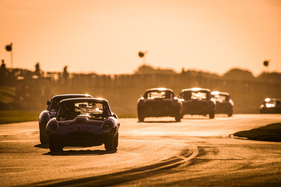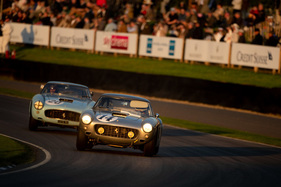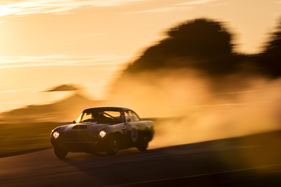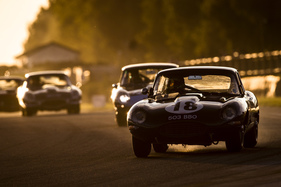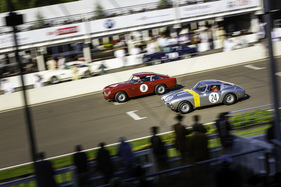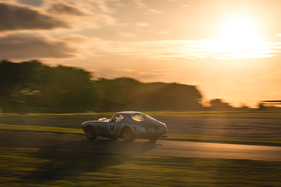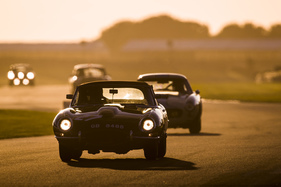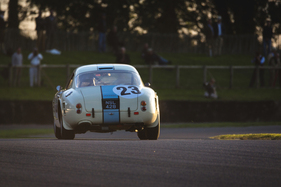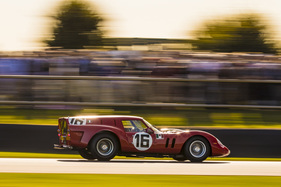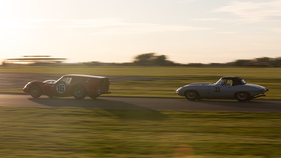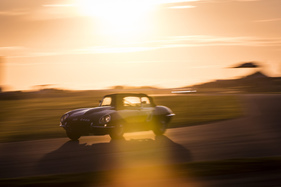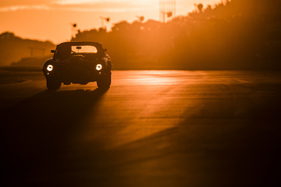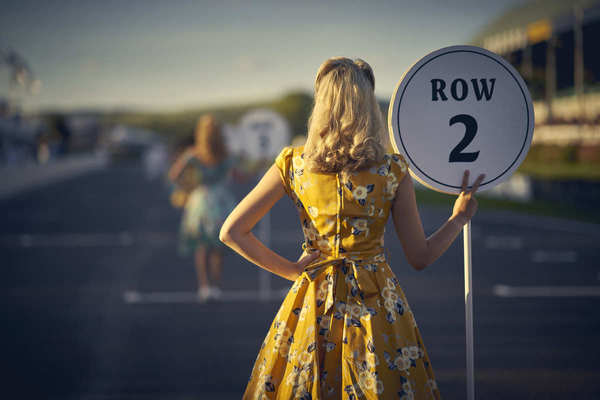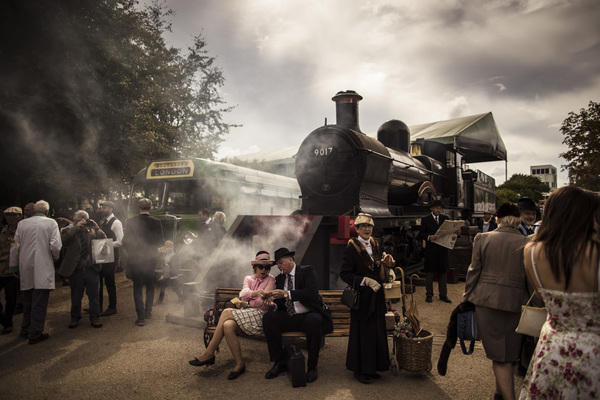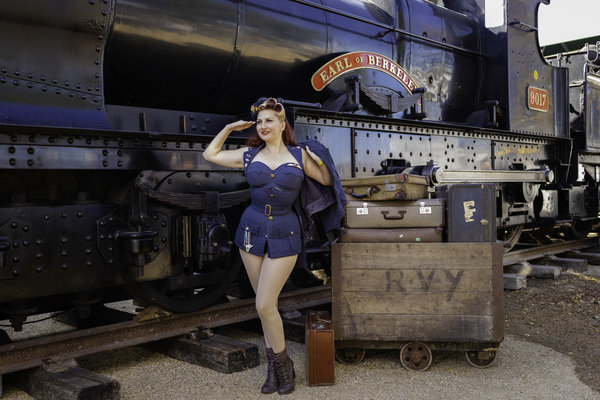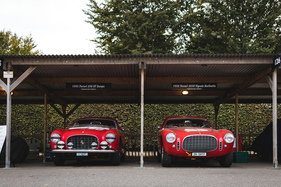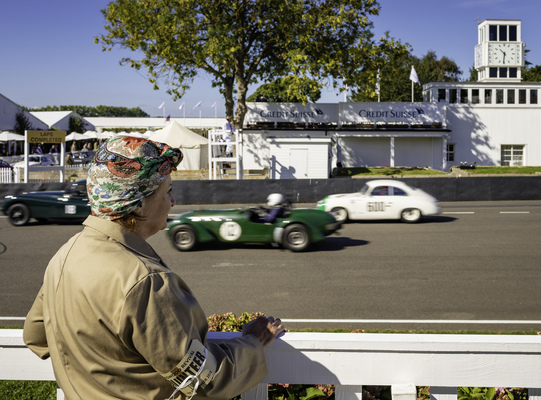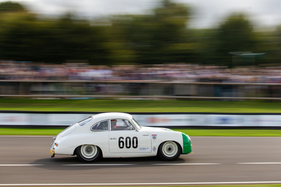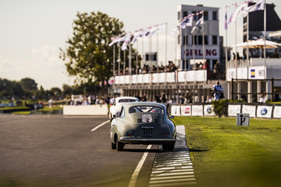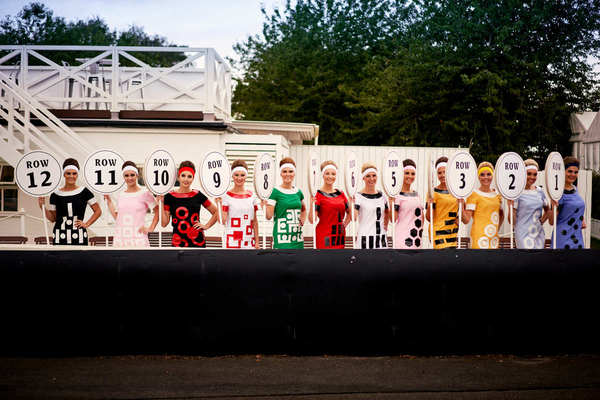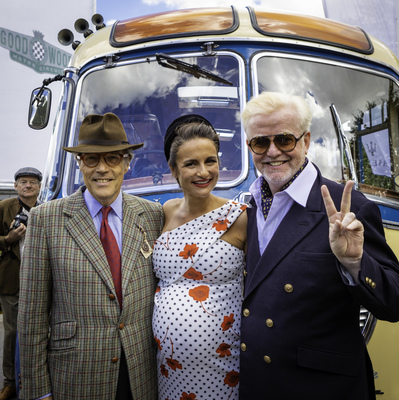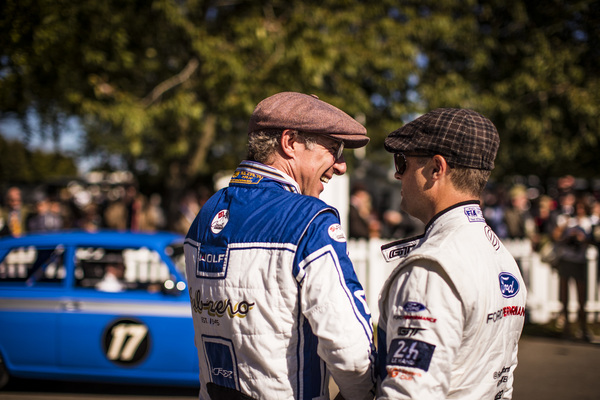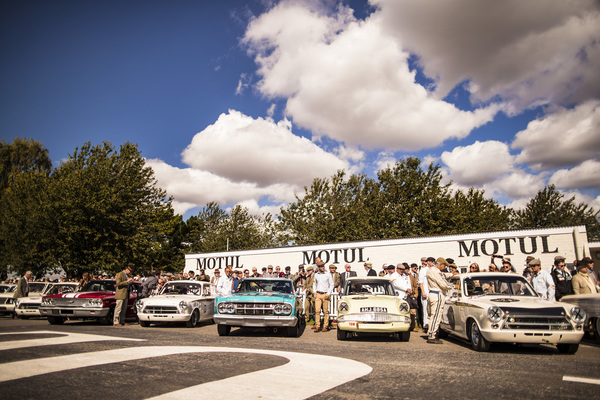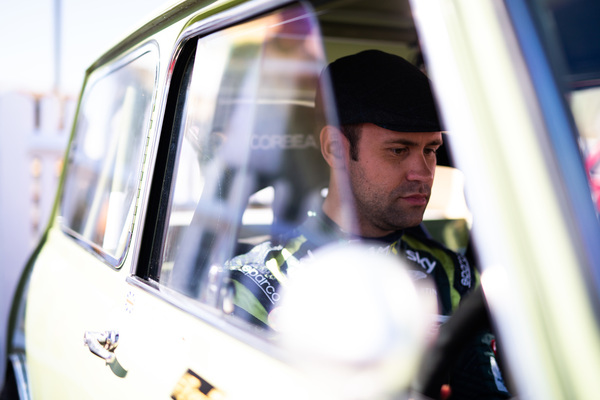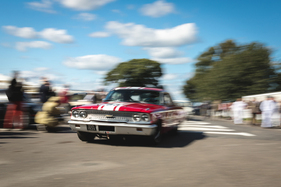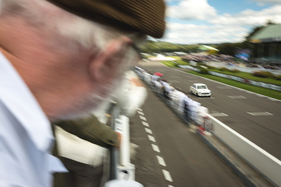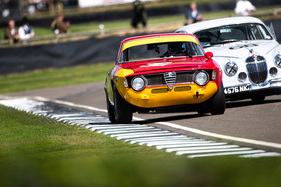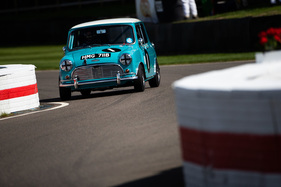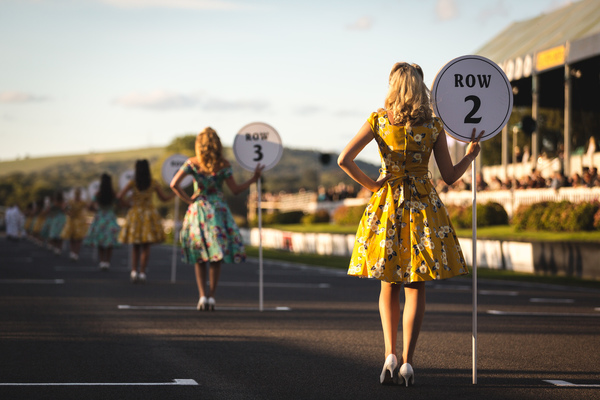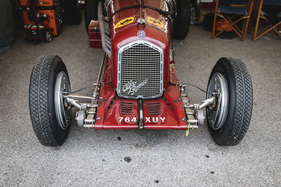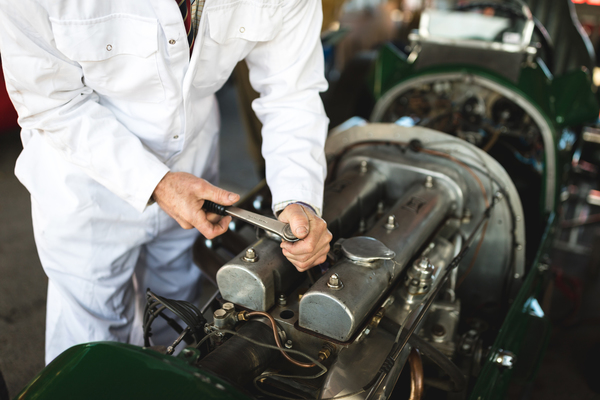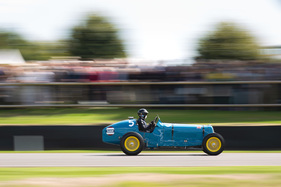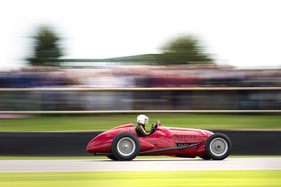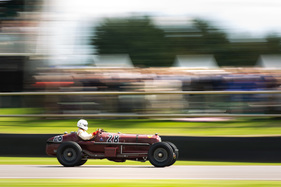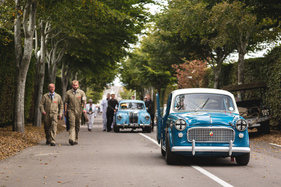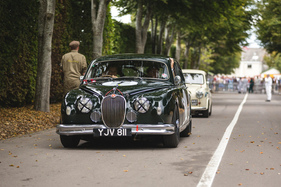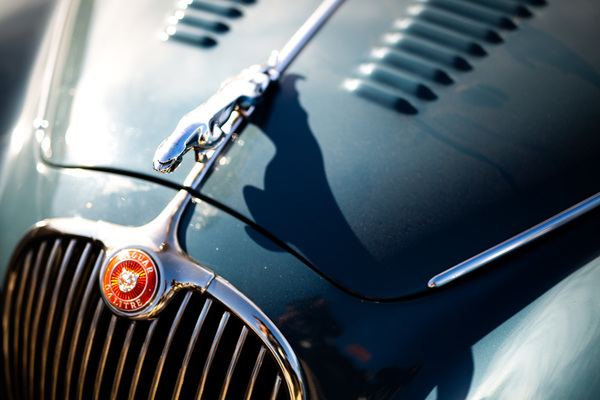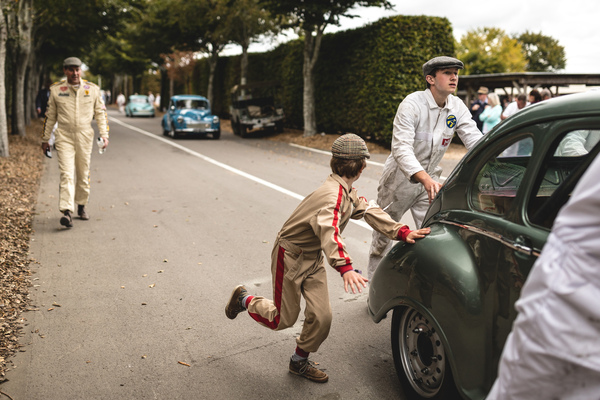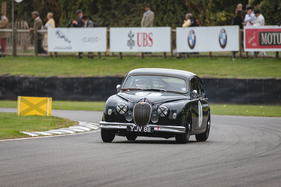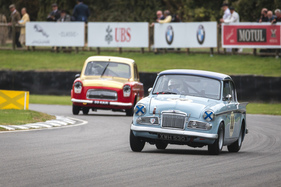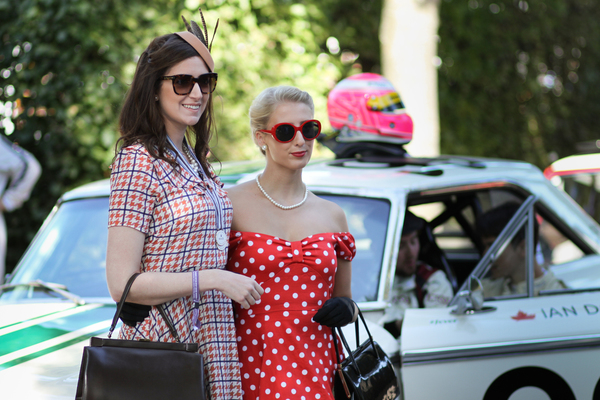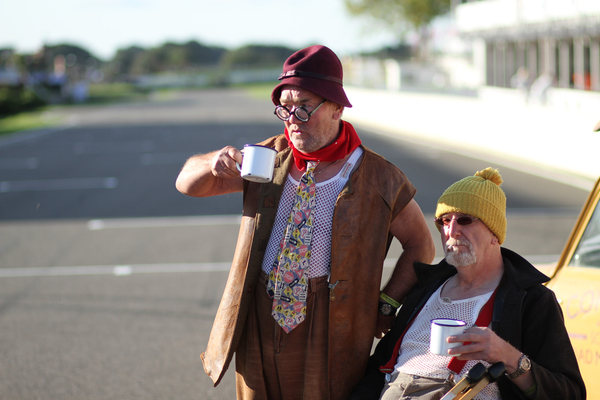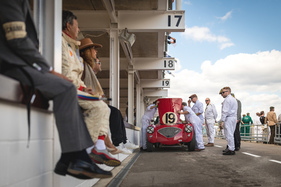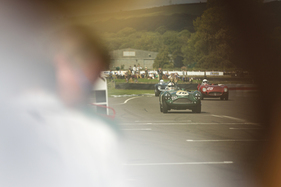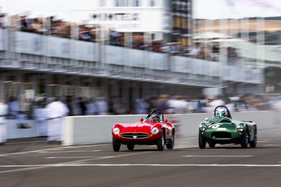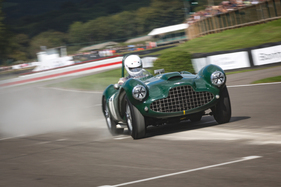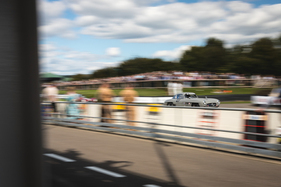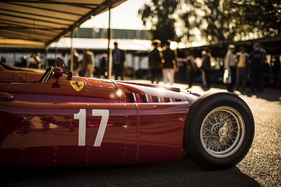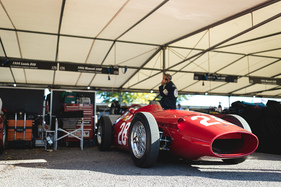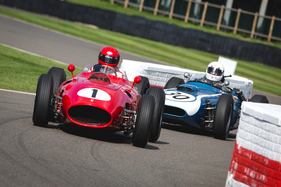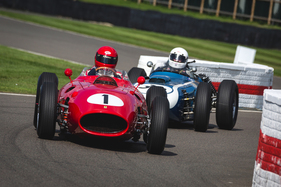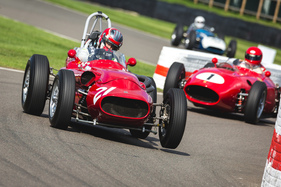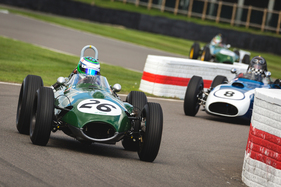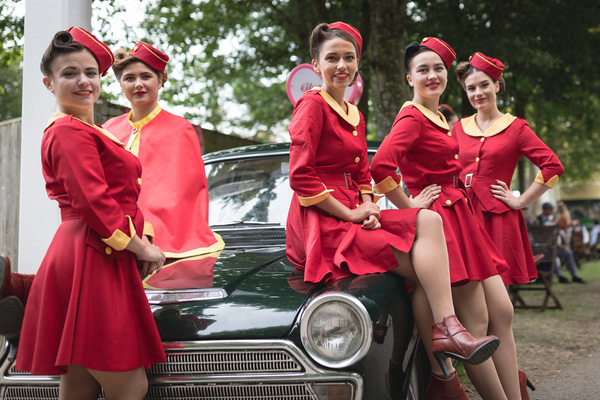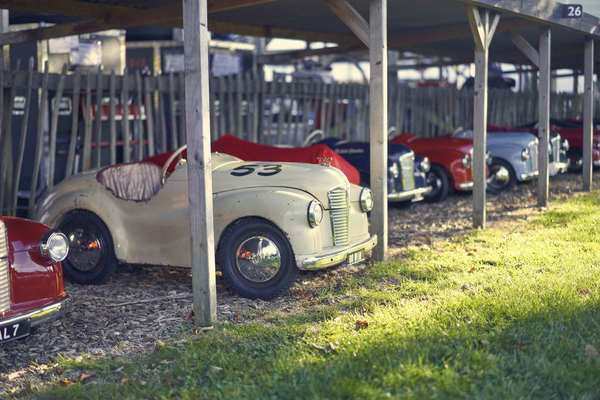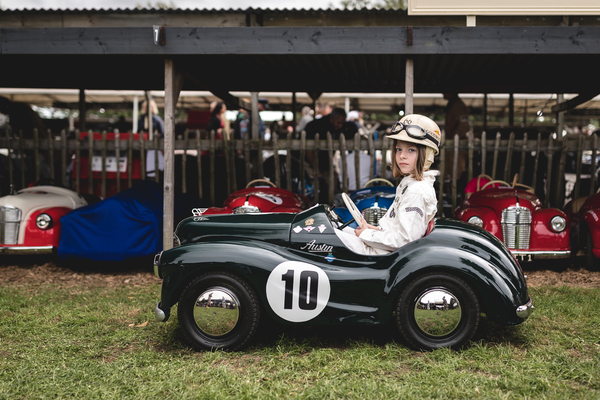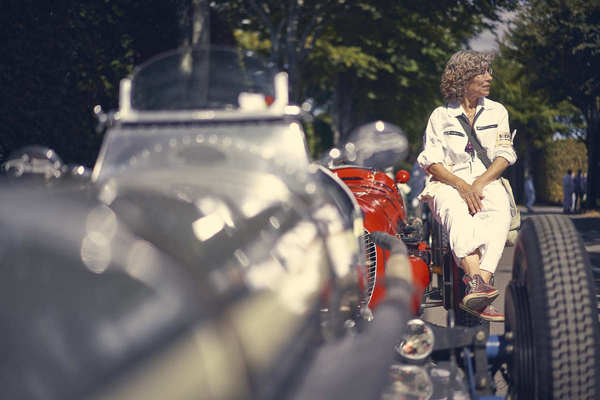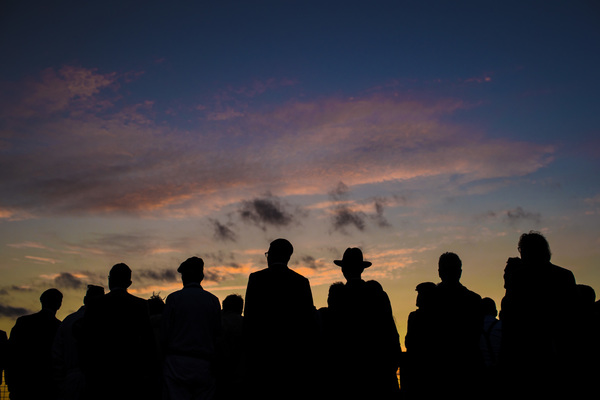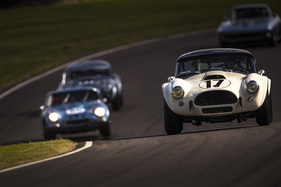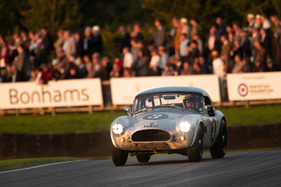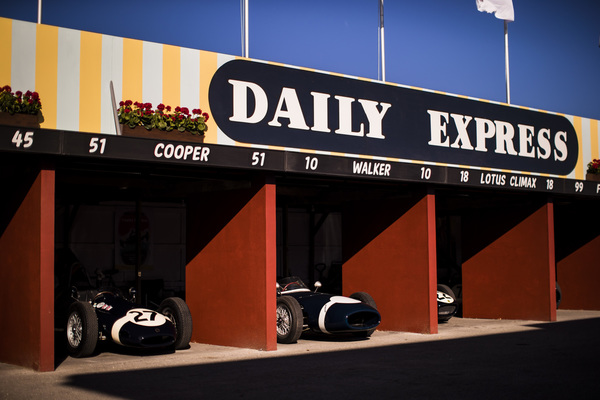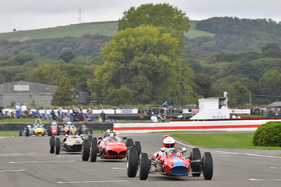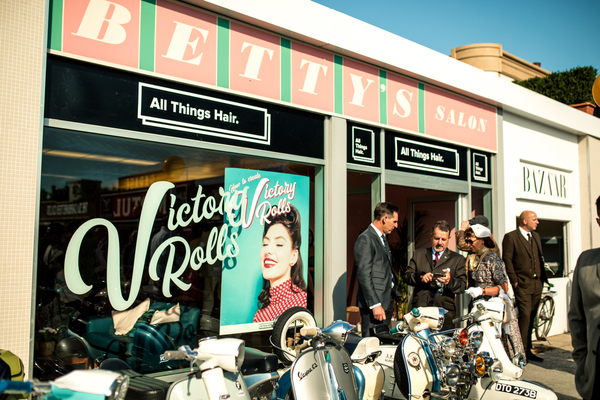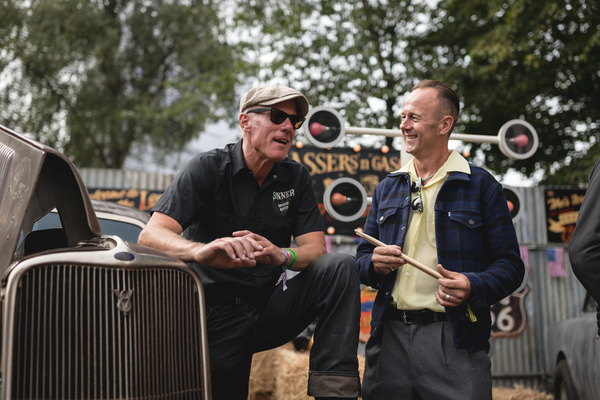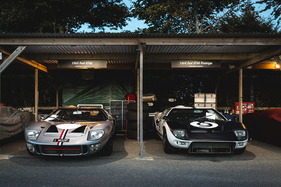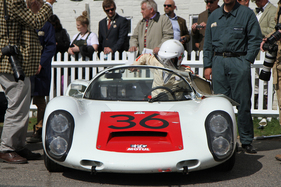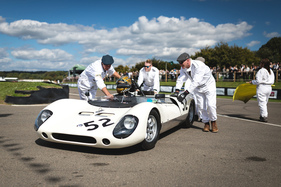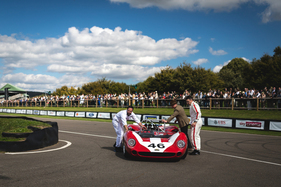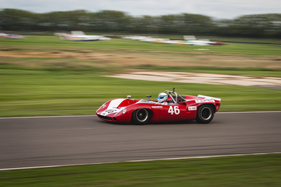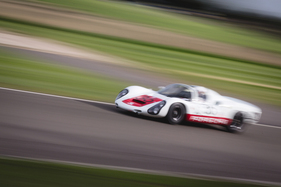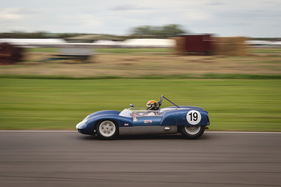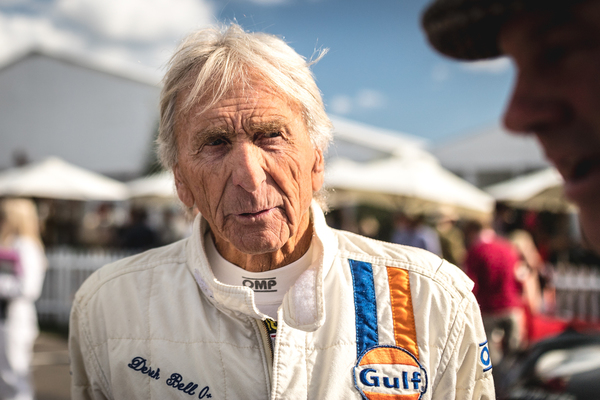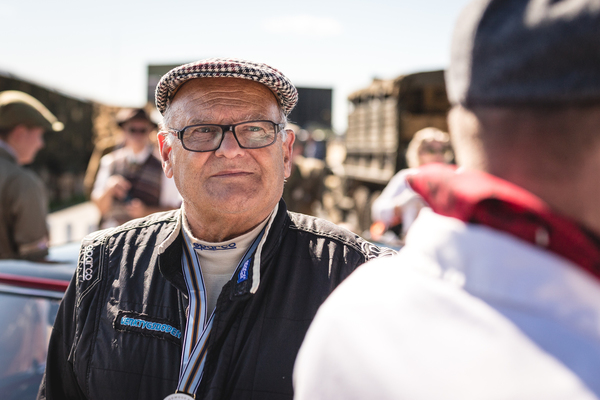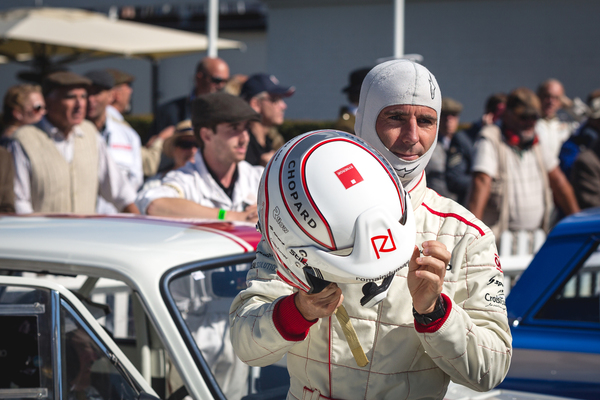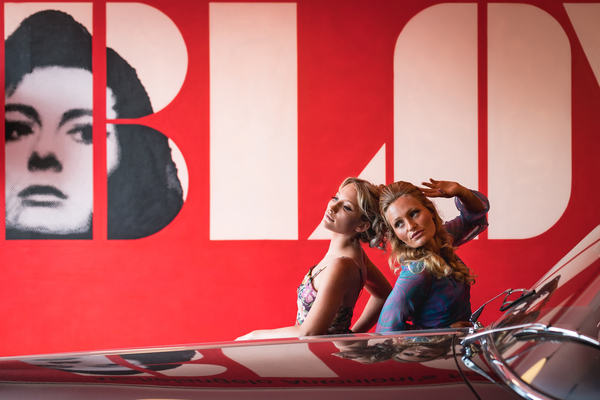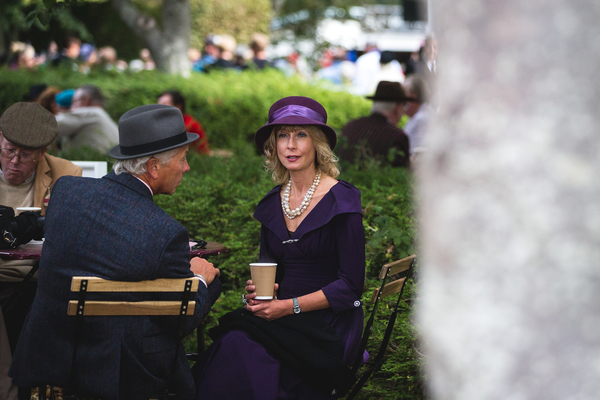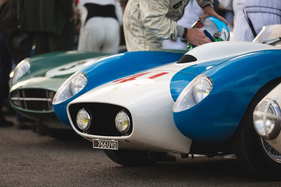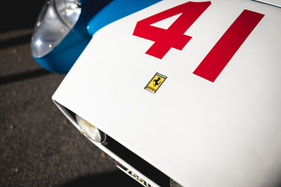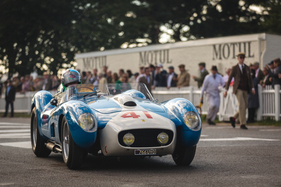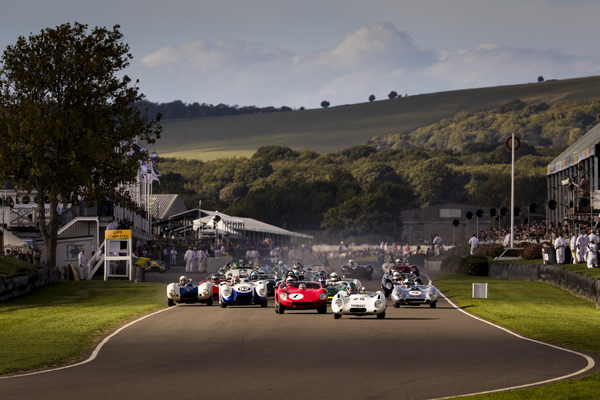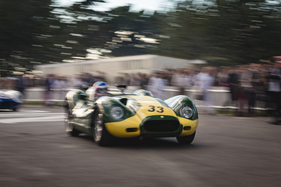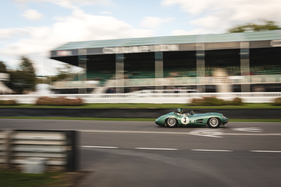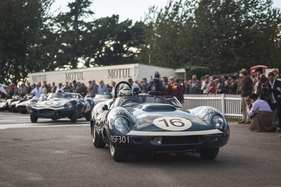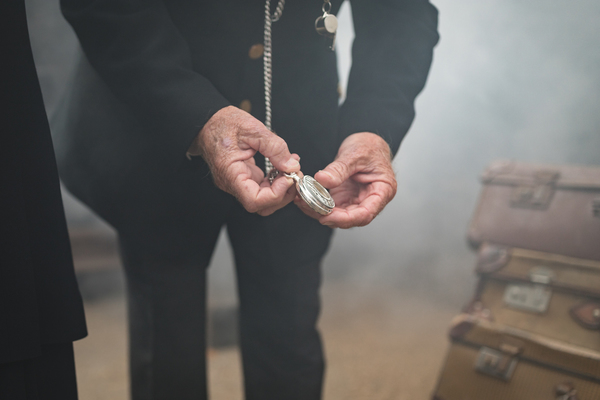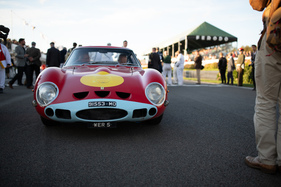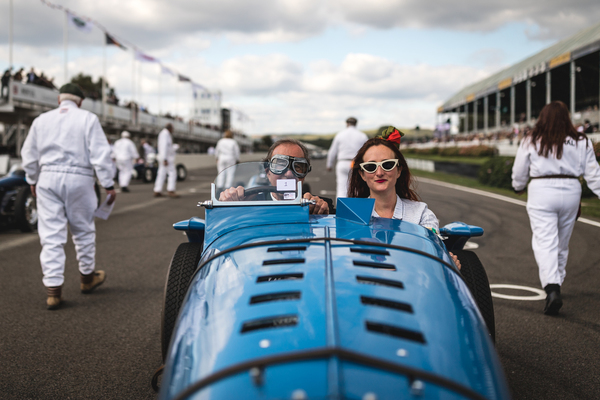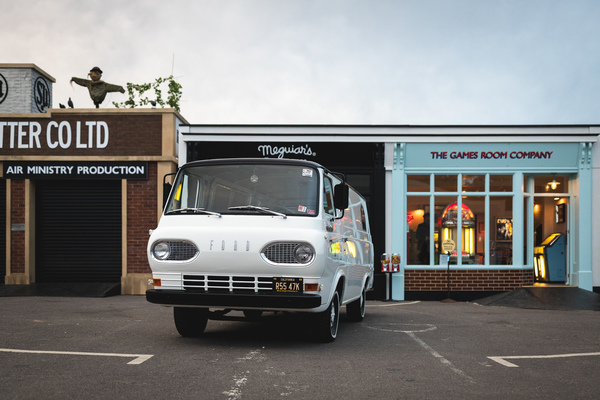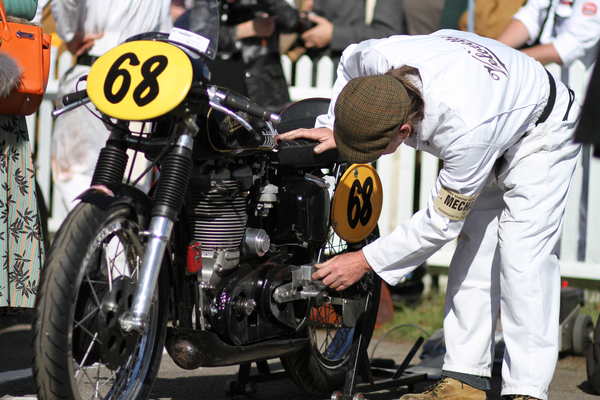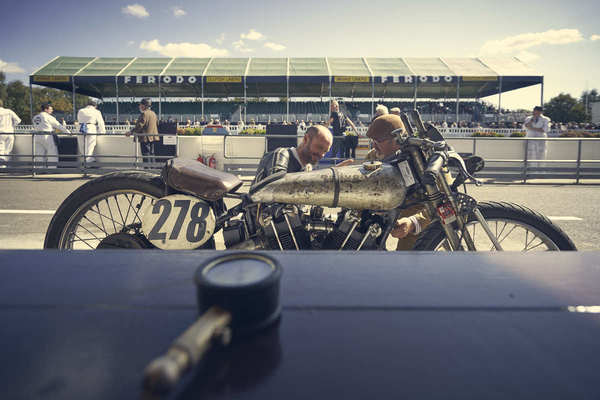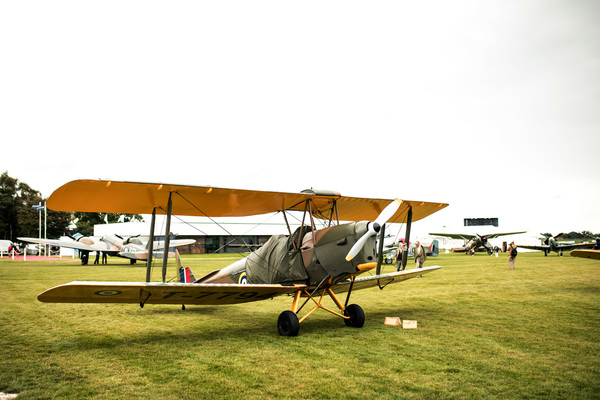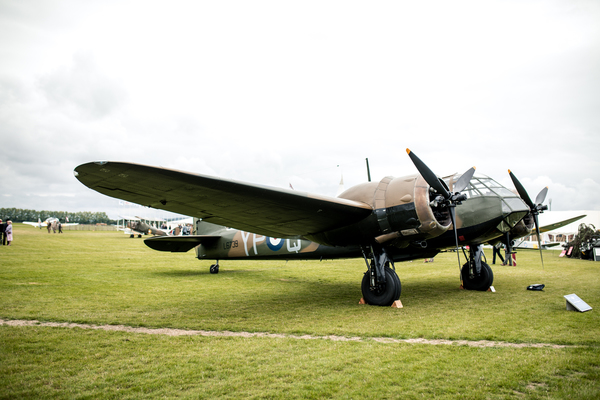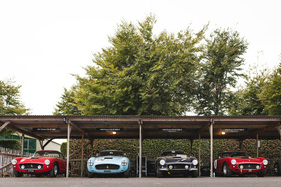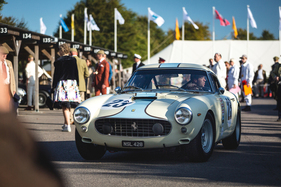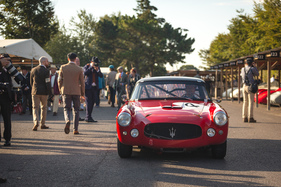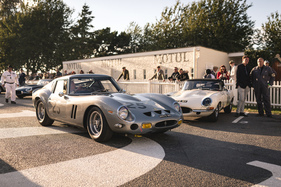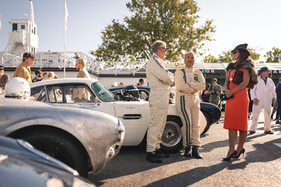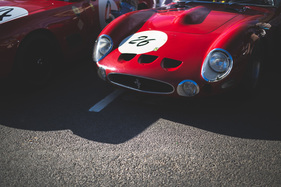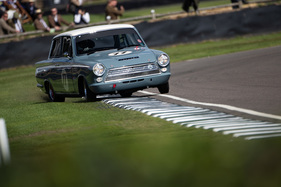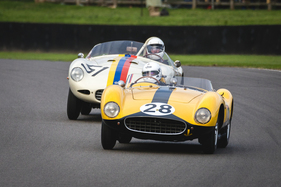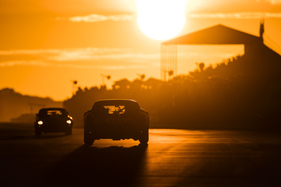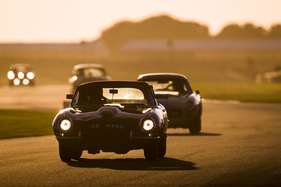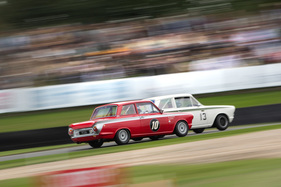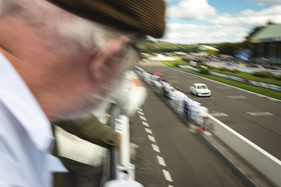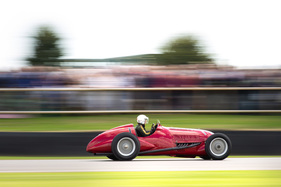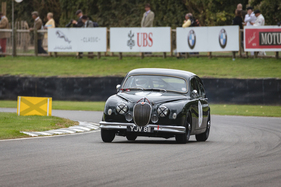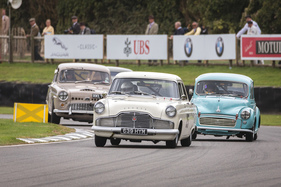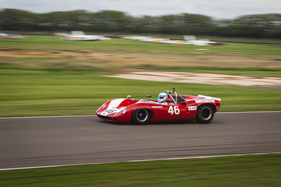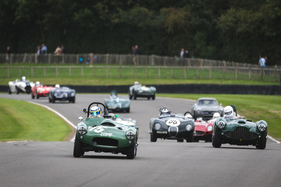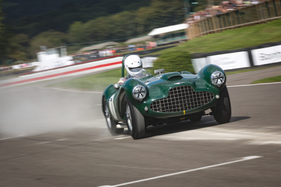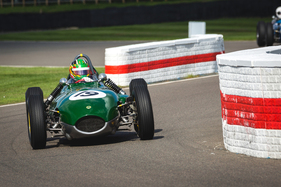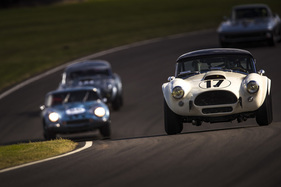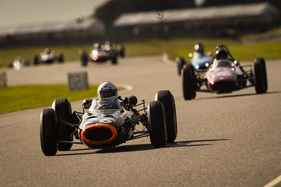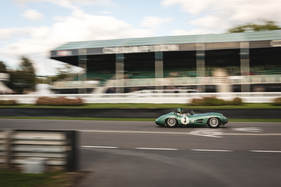Even if you know English, the word "exuberant" (pronounced as "exiuberant" with an emphasis on the "u") is not part of the typical vocabulary that you use all the time. In Chichester, however, where the Goodwood Revival takes place every year, you could hear this exact word repeatedly on the small radio in your ear. This handy radio allows Revival visitors to hear the commentary of the track announcers, no matter where they are.
And the "speakers" had good reason to keep talking about an "exuberant" driving style, which can be translated as lively, vital or exciting. So what the speakers wanted to say was that the drivers put in a lot of effort and didn't spare the historic vehicles any more than a Cup driver would spare his Renault Clio (or the R5 back then).
It was to be expected that this would automatically result in eventful and exciting races, but it was perfected in Goodwood at the 20th edition from September 6 to 9, 2018, from the first to the last race.
Exciting practice runs
Things really got down to business on Friday, although initially only practice runs were scheduled. But these runs were already highly dramatic and almost felt like races.
There was no lack of ambition on the part of the drivers, as was evident in the qualifying session for the Sussex Trophy, for example, when Lister Knobblies battled for the top grid positions with Jaguar D-Types and various Ferraris.
Kinrara sunset
One of the first highlights came on Friday evening, however, when the race for the Kinrara Trophy started as the sun was about to set. Anyone who suspected that the starting field was worth over £200 million was probably not entirely wrong.

There were two Ferrari 250/330 GTOs, several 250 GT SWBs, three Aston Martin DB4 GTs, a horde of AC Cobras and Jaguar E-Types as well as two Austin-Healeys, a Maserati 3500 GT and the unique Ferrari 250 GT SWB "Breadvan", a Ferrari-based baker's estate, so to speak.

Right from the start, the action was vehement and the driving was definitely very "exuberant". Halusa in the Breadvan and Minshaw in the Jaguar E-Type took turns at the front, Emanuele Pirro then took over the Ferrari Breadvan at the driver changeover, Keen the E-Type. And Pirro took the lead again, relinquished it once more, only to finally win it back for good.
This all took place in the yellow light of the setting sun, a unique spectacle. The eager drivers cared less about the valuable material, Astons and Ferraris spun off the track, and there were cold deformations too.
Rob Huff in the E-Type provided a final bouquet when his hood opened at race speed and he had to drive blind at times, but still managed to take third place behind Minshaw/Keen in the other E-Type.
Incidentally, the GTOs did not finish, the best Aston Martin DB4 GT ended up in 5th place.
Turbulence around the Fordwater Trophy
The first race on the weather-friendly Saturday was dedicated to road-going sports cars from 1948 to 196. It looked like the fastest Porsche 356 (starting number 600!) from Sam Tordoff would win in practice, but he made a mistake at the start and soon found himself at the back of the field, while David Franklin led in the 1952 Ferrari 225S Vignale, only to fall back shortly afterwards after a trip to the grass.
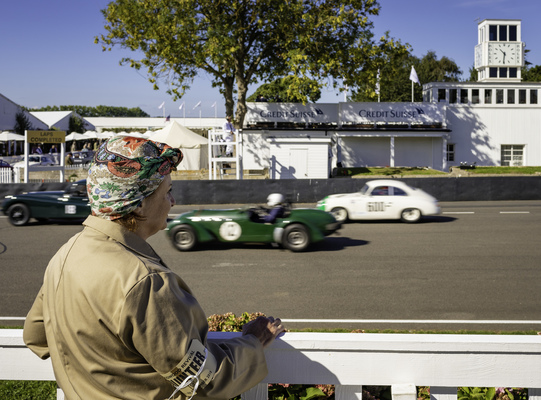
While Tordoff plowed his way through the field in the Porsche, Darre Turner in the 1950 Aston Martin DB2 held off the competition to take the chequered flag first. Tordoff made it to second place, while Stuart Graham in the Jaguar XK120 finished third and the initial leader Franklin in the Ferrari 225S was fourth.
Race of the warhorses for the St. Mary's Trophy
The St. Mary's Trophy was contested in two races on Saturday and Sunday. These races have guaranteed excitement and spectacle for years. The 2018 edition was dominated by the Ford Lotus Cortina Mk1, which successfully fended off American competition in the form of a 1963 Studebaker Lark Dayotna 500, several Ford Galaxie 500s and a Mercury Comet Cyclone.

This was not so clear-cut, as the American touring cars were able to demonstrate a considerable performance advantage. In the first race, it looked as if the hare - the Studebaker - could prevail against the foxes - four Lotus Cortina - but in the end only a second place for the heartily (exuberantly) driving Matt Neal looked out, 0.797 seconds behind the winner Andy Praulx in the Ford Lotus Cortina.
The second round on Sunday afternoon then went to Olivier Hart, who drove the Alfa Romeo 1600 GTA around the course with bravura and lightning speed, followed by Roger Wills in the Mercury Comet Cyclone, who unfortunately also cleared the chicane, which meant a time penalty for the driver. There were also a few other incidents on Sunday, as the red Cortina rolled over shortly after the restart.
Steve Soper/Andy Priaulx won the two races in the 1963 Ford Lotus Cortina Mk1 prepared by Soper himself. Soper, who wants to sell the car, commented on his success that the car had probably not become more valuable as a result, but that it should certainly be easier to sell.
Incidentally, the fastest touring car driver was Ashley Sutton in the red Ford Lotus Cortina, who achieved an average speed of 152 km/h for the 3.83 km circuit. Impressive!
Close battle for the Goodwood Trophy
The real heroes of the Goodwood Revival were probably the guys with the oldest cars. They let it fly and the spectators were terrified. After the first five laps, the three fastest cars were still within a second of each other. A Maserati, a Bugatti and an ERA battled for victory, while the reckless Julian Majzub in the Alfa Romeo 308C did not always find the line perfectly, but fought all the more spiritedly to catch up.
In the end, pole-setter Calum Lockie in the 1938 Maserati 6CM was four tenths ahead of Mark Gillies in the 1934 ERA A-Type R3A. Burnett followed at a respectful distance in third place in the 1938 Alfa 2 Litre Single Seater, followed by Christian Glaesel in the 1932 Alfa Romeo P3, Tom Dark in the 1945 Bugatti Type 73C and Julian Majzub in the 1938 Alfa Romeo 308C. What a race that was, of course, not without incident!
Three cats battled it out for the Jack Sears Memorial Trophy
The race for the Jack Sears Memorial Trophy with touring cars from the late fifties was also very close. Three Jaguar Mk1s battled for victory at the front.
They were followed by a wide range of different saloons, mainly from British manufacturers, including the Austin A105, Jensen 541R, Riley 1.5, Austin A35, MG Magnette ZB, Morris Minor, Wolseley 1500, Sunbeam Rapier, Jowett Javelin (!) and Hillman Minx, supplemented by imports from Volkswagen, Borgward and Fiat.
After a number of incidents, various spins and minor accidents, the winner was John Young in the 1958 Jaguar Mk 1, followed by Justin Law and Grant Williams in the other two Jags. The top three touring cars were separated by just six seconds after 16 laps.
Exotic sports cars in the race for the Whitsun Trophy
Two-seater sports cars from 1962 to 1966 battled for the best places in the Whitsun Trophy race on Saturday. The V8-powered cars clearly outperformed the slimmer Porsche 910s.
Mike Whitaker in the 1965 Lola-Chevrolet T70 Spyder was no match for Rob Huff in the 1962 Lotus-Oldsmobile 19, who came second in practice, but had to give way to Darren Turner in the unusual 1965 Hamill-Chevrolet SR3 in the race. Overall, this was certainly not the most exciting race, but the battle for second place still kept the spectators on the edge of their seats.
Almost like back then at the 9-hour race
The race for the Freddie March Trophy was deliberately reminiscent of the legendary 9-hour endurance races at Goodwood. At the start were two-seater sports cars from 1952 to 1957, including several HWMs, a Lagonda V12 Le Mans, several Jaguar C Types, some Maserati 350/300 S cars, as well as sports cars from Ferrari, Alfa Romeo, Frazer Nash, AC, Cooper, Aston Martin and Austin Healey.
A colorful field with attractively shaped sports cars, including Jochen Mass in the Mercedes-Benz 300 SL. The rule is that the cars should start in their original livery. This was probably not quite the case for the HK-Engineering gullwing, which is why the company sticker on the windshield had to be removed for the race.
A glance over the starting field certainly made the spectators' mouths water, but the excitement in the race itself was limited. About 14 minutes before the end, a mass accident, which fortunately did not result in any major bodywork damage, led to a safety car phase, but the order of the sports cars at the front hardly changed after that, so that Martin Hunt in the 1954 HWM Jaguar was able to drive home the victory ahead of the 1954 Lagonda V12 Le Mans, driven by Darren McWhirter. Third place went to the HWM Cadillac of Richard Woolmer.
Excitement right to the end in the rear- versus front-engine race
The race for the Richmond & Gordon Trophy, which started on Sunday morning in dry but overcast weather conditions, promised to be very exciting. Front- and mid-engined single-seaters from the years 1954 to 1960 faced each other, i.e. monoposti from Lotus, Cooper, BRM, Scarab, Maserati, Ferguson, Ferrari, Aston Martin, Kieft and Lancia.
Sam Wilson in the mid-engined Lotus 18 took the lead in practice, but in the race William Nuthall in the mid-engined Cooper Climax T53 from 1960 won by just 1.5 tenths ahead of the front-engined Lotus Climax Type 16 from 1958 after a heart-stopping finale. It had even looked like a Lotus victory until the last lap.
The race was marked by several incidents, with five cars spinning on the oil of Joaquin Folch's Lotus 16 early on, which led to a restart.
Not just racing
As always, the races at Goodwood were responsible for the highlights, but there was also plenty to see and do off the track, whether it was getting a historically correct haircut or admiring the airplanes on the grass field. There was even a movie theater showing films from the past, and on Sunday Bonhams auctioned off a large number of classics.

The term "time travel" comes up again and again when describing the Goodwood Revival, and there were indeed moments when you really did feel like you had landed in the middle of the 1950s (or before). Every year, this transformation becomes even more perfect and you really have to give the organizers of the Revival credit for managing to keep the race track, including the buildings and surroundings, so close to the historic original.

Fittingly, demonstrations and celebrations are organized every year, such as the track parade in memory of the gentleman Rob Walker or the celebrations commemorating the many participants of the last 20 years.
Cobras versus E-Types in the RAC Tourist Trophy Celebration
It wasn't the Ferrari-versus-Cobra war that caused excitement in the race for the Royal Automobile Club TT Celebration, but the battle of the six-cylinder Jaguar E-Types against the eight-cylinder Cobras, although there were certainly other fast two-seaters built between 1961 and 1965 in the star field.
Ultimately, however, neither the Chevrolet Corvette nor the Porsche 904 GTS had anything to do with the overall victory, as had already been shown in practice, which revealed five Cobras and one E-Type in between to be the fastest racing cars in the field.
The strong Cobras converted their performance into the first four positions in the race, followed by two E-Types in 5th and 6th place. A number of incidents and once again "exuberant" drivers ensured that it was not a one-make race. Huff had almost made it to the front with his E-Type, but then slammed into the rear of the Cobra Strettons and retired. The TVR Griffith 400, which at some point lost its rear window and continued as a pickup, caused quite a spectacle during the race with an enforced driver change. After the race, the driver commented laconically that the Griffith was not necessarily an aerodynamically balanced car and that the missing rear window had therefore hardly had any effect.
During the duel between the TVR and André Lotterer's Cobra, the Griffith also lost the rubber on the windshield, which looked on the track as if the TVR had thrown a snake at the Cobra. Whitaker/Jordan in the TVR actually made it onto the podium, but the race was won by father and son Hart, who beat the competition by 18 seconds in their Cobra, even though the father had cleared part of the chicane and received a five-second time penalty for this. Mindshaw/Keen finished second in the 1965 Jaguar E-Type.
The race of the weekend for the Glover Trophy
The race for the Glover Trophy, for Formula 1 racing cars built between 1961 and 1965, was one of the most impressive of the weekend, and not just in terms of the soundtrack. While it looked like Andy Middlehurst in the 1962 Lotus Climax 25 was going it alone after practice, the Lotus driver was never able to pull away from the Ferrari 1512 in the race.
Yellow against blue wheels, a duel that lasted almost the entire race. Although the Ferrari was slightly faster, overtaking was not easy for Joe Colasacco. The two cars raced around the circuit with an average speed of over 165 km/h at intervals of 1/3 of a second. It was only shortly before the end that the Ferrari finally managed to overtake the Lotus.
Jon Milicevic took third place in the 1964 LDS Climax, which was able to prevail against the eight-cylinder superiority with its four cylinders. In 5th place was 77-year-old Richard Attwood in the 1965 BRM P261, who was even in 3rd place at one point during the race, but then dropped back a little due to technical problems.
Near tragedy in the final race for the Sussex Trophy
Everything looked like a sure victory for Phil Keen in the 1959 Lister-Jaguar "Knobbly" when the beautiful two-seater sports cars from 1955 to 1960 lined up for the start. In practice, he had pulled out a comfortable 1.4-second lead over the competition. But before the chequered flag fell, Keen raised his hand and was pushed back into the pits, what a tragedy.

After the start, however, the unlucky driver was able to follow the pack out of the pits and he set off on a furious chase to catch up, while at the front behind the leading Wills in the Lotus 15, the duel between Sam Hancock in the Ferrari 246S Dino and Oliver Bryant in the Lotus 15 had the crowd roaring from the grandstand seats.
Meanwhile, Keen overtook competitor after competitor and was already in 10th place after just three laps. A little later, he appeared in the rear-view mirror of the two battling cars in 2nd and 3rd place.
It took a few laps before Keen in the Lister set off in pursuit of Wills in the leading Lotus. He probably wouldn't have got past the Lotus in time, but Wills made a mistake just a few meters before the finish and had to let the Lister go. Phil Keen had managed to overtake the entire field after starting from behind. What a way to end a dramatic race weekend.

The fact that the weather remained dry throughout the three days, with the exception of a few raindrops, was of course perfect for the anniversary event, which could be followed all over the world thanks to live streaming.
